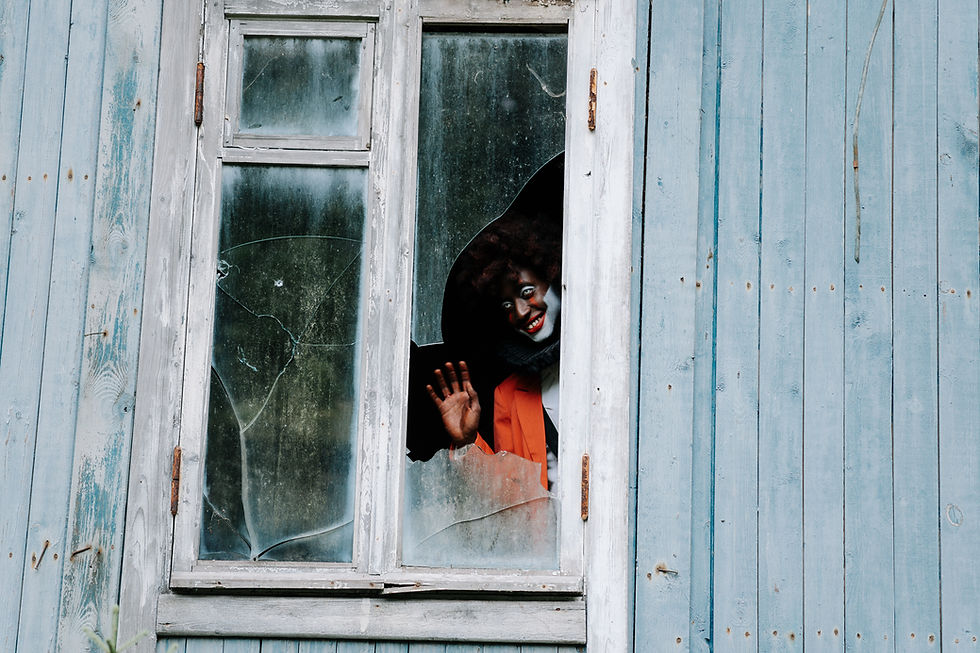Making Little Monsters
- J. Keith Parnell
- Apr 30, 2017
- 4 min read
Updated: Mar 18
CULTURE
Making Little Monsters: An analytical look at fandom 2.0
By Keith Parnell
Lady Gaga, Fan Identification and Social Media

JACKSONVILLE, FL— In the world of fandom, there are two types of fans. There are the fans of the artist’s work and the fans of the artist. In the 2013 article Making Monsters: Lady Gaga, Fan Identification and Social Media, authors Melissa Click, Hyunji Lee and Holly Holladay explore the latter. The authors establish a base understanding of the most commonly known dynamics of the fan/ artist relationship through the works of Donald Horton, Richard Wohl and John Caughey, in which it is established that fans develop a “parasocial” relationship with their icon giving the illusion of a “seemingly face-to-face relationship.” Through the lens of social conformity and monetary gain, this illusionary relationship is painted in a negative aspect as fans develop a need to mirror the artist, lending further subjection to capitalistic gain though a false sense of self. However, though the examination of the Gaga/ Little Monster relationship proves a correlation of the parasocial, it reaches beyond that of imaginary relationships and fan object mirroring, instead encouraging individuality and a genuine fan/ fan object connection through social media and community. This is established through three key factors identified by the authors: Fan Identification, Monsters and the Monstrous and Celebrity in Social Media.
Fan Identification
To gain a greater understanding of fandom established between Gaga and her “superfans” referred to as little monsters the authors interviewed an international set of 45 Little Monsters ranging in demographics including an equal division of gay to straight and male to female participants ranging in age from 14 to 53 years old. During these interviews the participants were asked a series of questions regarding the self-identifying fan label “Little Monster” and the social media relationships shared with Lady Gaga, referred to as “Mother Monster.” These interviews were transcribed and reviewed in the context of Cornel Sandvoss’s focus of the psychological relationships of fandoms. Sandvoss states that “[t]o fully understand fandom and the relationship between fan and object of fandom, we thus have to understand the psychological foundations of the self.” In Sandvoss’s reflection of self, he explains that the intensity of fandoms abolishes the bounderism between fans and the fan object and in effect fans “superimpose attributes of the self, their beliefs and value systems and, ultimately, their sense of self on the object of fandom.” This is further established through ethnographies of Elvis and Bruce Springsteen fandoms. When the authors delve deeper into the Gaga fandom, prior ethnographical studies and prior understanding of fandom dynamics is brought into question because of direct fan to fan object relationships made possible through social media and the fandom community.
MONSTERS AND THE MONSTROUS
What’s in a name? This is the essential context behind the examination of the “Little Monster” to “Mother Monster” relationship. Through a series scholarships examining the cultural and historical function of the term monster is summed up best by Timothy Beal, indicating that monsters are “personifications of otherness within sameness ... they are threatening figures of anomaly within the well-established and accepted order of things.” As minority groups of races, sexuality, and essential the human embodiment of the island of misfit toys, this is essentially the targeted fanbase of the “Little Monsters.” One of the participants asked about the origins of the names stated, “She just started calling us ‘Little Monsters’ and we started doing the ‘paws up.’ And I think then sometime after that we started calling her ‘Mother Monster.’” Another also described, “I remember having heard an interview or seen an interview with her where she said that she called her fans ‘Little Monsters’. And her Little Monsters decided to name her ‘Mother Monster’ because she’s the one that pretty much ... ‘birthed’ the Little Monster fan base.” By establishing themselves within a term generally used in a negative context, the Little Monsters essentially relabel the term in a positive light; encouraging the individuality that could otherwise be deemed uncouth or monstrous in conservative societal terms.
CELEBRITY IN SOCIAL MEDIA
It was identified clearly though the interview process that social media and internet driven communication played highly important roles in the development of the relationships between that of Little Monsters within their own community and that developed with Mother Monster. Fans attribute this deep connection to the highly reciprocal functionality of Twitter, specifically Gaga’s abandonment of the use of social media to drive promotional propaganda but rather as a genuine connection to her fans.
“She’s always so kind when people meet her and she’s just so giving and she tries to acknowledge her fans on Twitter, post their covers [of her songs] and says, ‘this is great,’ or posts their artwork and says how it’s beautiful. ... I think the fact that she goes out of her way to do that is remarkable.”
The Authors identify this and similar fan reactions as reciprocity of the relationship component that creates the bond between Gaga and her Little Monsters. At the time of the writing of the article Gaga held the number one position for number of Twitter followers. She currently ranks number eight, which nevertheless is notably impressive. It is asserted that the significance of Gaga’s status in social media is due to the authenticity of her voice. “You can tell that with her Twitter, she definitely writes it. It’s not someone else writing it for her. So, I think it adds to the authenticity of everything that she says and ... you know it’s her.”





Comments